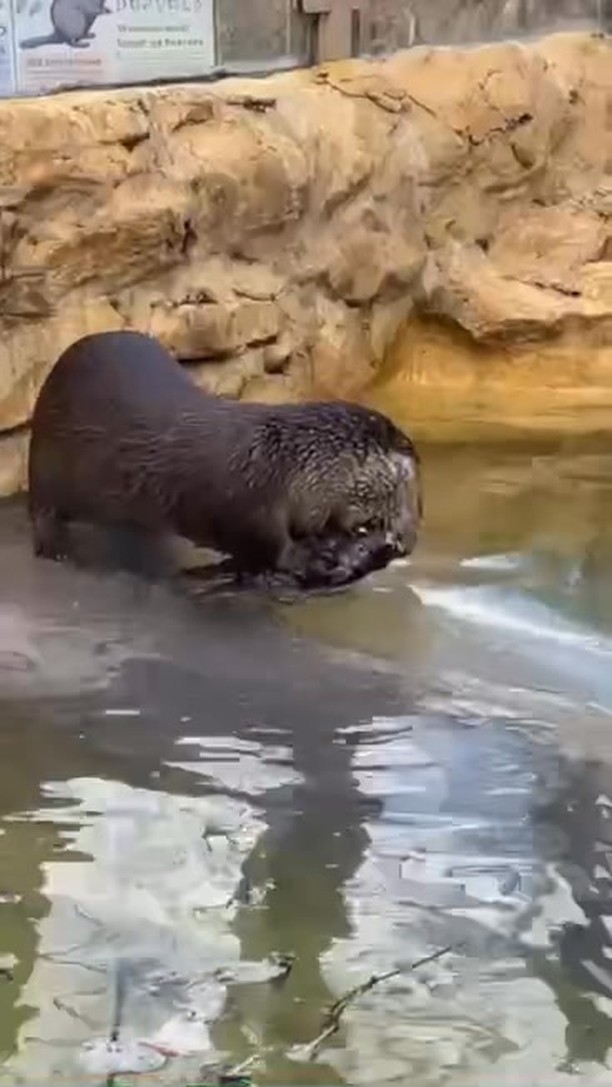- The dietary habits and nutritional needs of North American River Otters and the significance of whole prey feeding.
- Zoos’ role in otter conservation efforts and enhancing public awareness about wildlife preservation.
- The anatomy and behavior of North American River Otters, including their natural hunting techniques.
- Daily care routines by zookeepers and the educational impact of public engagement with otters.
- The ecological importance of otters in freshwater ecosystems and how they contribute to biodiversity.
North American River Otters, known scientifically as Lontra canadensis, are fascinating creatures with a distinct penchant for fish, particularly evident in their enjoyment of a complete tilapia during Morning MONCH. Understanding the dietary preferences and nutritional requirements of these agile mammals is crucial for their care in captivity. Whole prey feeding, as with tilapia, plays a significant role in replicating their natural diet, offering essential nutrients for their health and wellbeing. Otters in the wild typically consume various aquatic organisms, such as fish, crayfish, and mollusks, ensuring a balanced intake of proteins, fats, and vitamins. Whole prey feeding in captivity is not just about nutrition but also enrichment, as it stimulates their natural hunting and foraging instincts, thereby maintaining physical and mental health.
Zoos are instrumental in conservation efforts for North American River Otters. By providing an environment that mimics their natural habitat, zoos help preserve this species, which plays a vital role in freshwater ecosystems. Education is a crucial aspect of these efforts. Through direct observation and interaction, visitors can learn about the significance of otters and the issues they face, such as habitat loss and pollution. Zoos partner with wildlife organizations to support conservation programs that aim to bolster wild populations. Public education through these facilities raises awareness, encouraging community involvement in conservation and fostering a connection between people and wildlife.
North American River Otters are equipped with specialized adaptations that enable them to thrive as semi-aquatic mammals. Their streamlined bodies, webbed feet, and dense fur allow them to navigate water efficiently, making them skilled hunters. Unlike many terrestrial mammals, otters have closing nostrils and ears, enabling them to dive effortlessly without water ingress. Their playful nature is more than simple amusement; it is a beneficial behavior for skill development, which is crucial for survival in their natural habitats. Social creatures often found in family groups, these otters exhibit a range of vocalizations and behaviors that are both intriguing and informative for researchers and enthusiasts alike.
Zookeepers play a vital role in the daily care and management of North American River Otters, orchestrating routines that include feeding, cleaning, and health monitoring. They are tasked with creating an environment where otters can exhibit natural behaviors, crucial for their overall welfare. This involves designing exhibits with features like flowing water sources and diverse substrates to encourage exploration. An essential part of their work is educational programming, where they engage with the public, answering questions and providing insights into otters’ biology and conservation status. These interactions deepen public understanding and appreciation, fostering a culture of stewardship for future generations.
In freshwater ecosystems, North American River Otters serve as indicators of environmental health. They contribute to biodiversity by controlling prey populations, thereby maintaining balance within the food web. Their presence can highlight the quality of habitat and inform conservation strategies. Otters rely on clean, accessible waterways, which inadvertently conserves the wider environment for other species dependent on these habitats. Through their predation, otters manage species diversity, supporting overall ecological resilience. Understanding the ecological role of otters underscores the importance of preserving aquatic environments and the species dwelling within them.
Overall, Morning MONCH with our North American River Otters is more than just a feeding session—it encapsulates a broader narrative of animal care, conservation, education, and community engagement. Through thoughtful zoo management and public involvement, these institutions help safeguard otters and many other species, ensuring their continued existence for posterity.
*****
Source Description
Morning MONCH with our North American River Otters 🦦. They received a whole tilapia!
📸 keeper Taylor


